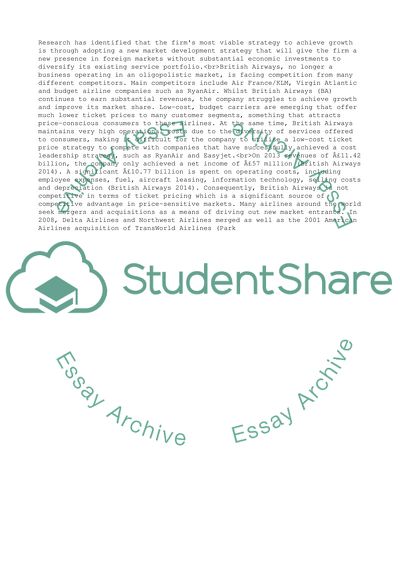Cite this document
(Present a critical strategic analysis of British Airways covering the Essay, n.d.)
Present a critical strategic analysis of British Airways covering the Essay. https://studentshare.org/business/1855671-present-a-critical-strategic-analysis-of-british-airways-covering-the-following-areas-resource-audit-value-systems-productservice-portfolio-bcg-matrix-potential-future-strategic-growth-oidentification-of-options-oevaluation-of-options
Present a critical strategic analysis of British Airways covering the Essay. https://studentshare.org/business/1855671-present-a-critical-strategic-analysis-of-british-airways-covering-the-following-areas-resource-audit-value-systems-productservice-portfolio-bcg-matrix-potential-future-strategic-growth-oidentification-of-options-oevaluation-of-options
(Present a Critical Strategic Analysis of British Airways Covering the Essay)
Present a Critical Strategic Analysis of British Airways Covering the Essay. https://studentshare.org/business/1855671-present-a-critical-strategic-analysis-of-british-airways-covering-the-following-areas-resource-audit-value-systems-productservice-portfolio-bcg-matrix-potential-future-strategic-growth-oidentification-of-options-oevaluation-of-options.
Present a Critical Strategic Analysis of British Airways Covering the Essay. https://studentshare.org/business/1855671-present-a-critical-strategic-analysis-of-british-airways-covering-the-following-areas-resource-audit-value-systems-productservice-portfolio-bcg-matrix-potential-future-strategic-growth-oidentification-of-options-oevaluation-of-options.
“Present a Critical Strategic Analysis of British Airways Covering the Essay”. https://studentshare.org/business/1855671-present-a-critical-strategic-analysis-of-british-airways-covering-the-following-areas-resource-audit-value-systems-productservice-portfolio-bcg-matrix-potential-future-strategic-growth-oidentification-of-options-oevaluation-of-options.


